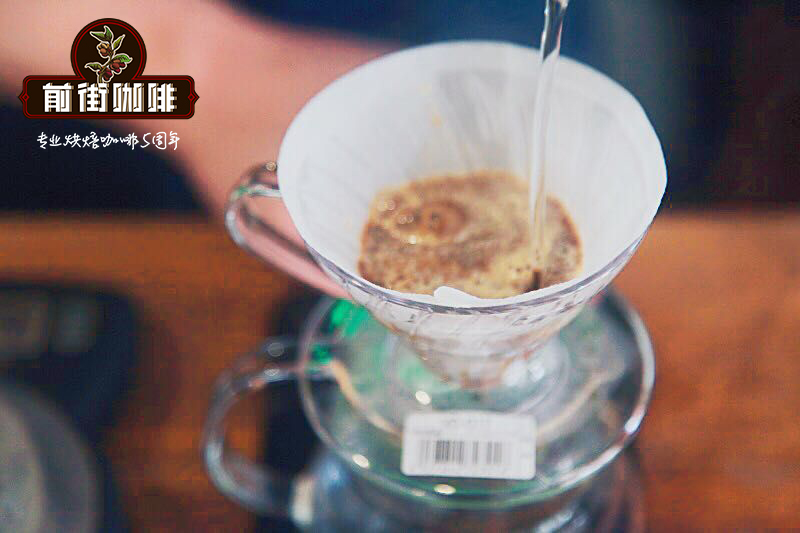Growing situation in Napier Valley, Papua New Guinea Coffee growing area-PNG Organic Coffee Bean Story

Professional coffee knowledge exchange More coffee bean information Please pay attention to coffee workshop (Weixin Official Accounts cafe_style)
Papua New Guinea coffee nebilyer valley tmbul kuta processing plant
PAPUA NEW GUINEA Nebilyer Valley A/X
Papua New Guinea Napier Valley A/X
Region: Western Highlands
Producer: Selected smallholder farmers
Breed: Arusha/Tibika/Bourbon
Grade: A/X
Treatment method: full washing method
Altitude: 1600-1800 m
Season: May
Papua New Guinea is located in the eastern half of the island of New Guinea in the southwest Pacific Ocean. It was originally a British colony (now also a member of the Commonwealth) and borders Irian Jaya Province of Indonesia to the west. Papua New Guinea has more than 600 islands with a population of more than 600 and speaks nearly 800 different languages.
New Guinea is a large mountainous island shared by Indonesia and Papua New Guinea. The island's alpine aborigines were not discovered until 1930 by Australia Mick Leahy, and they have retained their primitive civilization, making them a paradise for anthropological research.
What is particularly amazing is that the video taken by Mick when he first went into the mountains to meet the aborigines was preserved and later combined with interviews with local people to make a documentary reflecting the process of contact between highland aborigines and modern civilization. The title is "First Contact." After the film was released in 1983, it shocked the world and won numerous awards. Such images were unprecedented and unprecedented. They were truly unique. The story follows: Mick grew up with Joe, a native son of the tribe, and later received a Western education in a white school, becoming a middleman between the two cultures. He made a fortune growing coffee in the highlands. His attempts to expand coffee plantations were documented in two documentaries, along with First Contact and called The Highland Trilogy.
The laws of history always tell us that a heterogeneous new civilization must bring a period or a certain degree of loss and pain to its recipients. But things look worse in Papua New Guinea, where what is happening can only be described as chaos and bloodshed. No one can say exactly why. Frequent violence, endless tribal feuds, lack of resources, lack of medicine... the old is dying, the new is not established. People there say they don't see hope for this country.
Women in Papua New Guinea, on the other hand, suffer from brutal domestic violence. In traditional culture, women have always been regarded as the private property of men, can be beaten and scolded at will; and after marriage, they do not live together and sleep with their wives at night. Although the introduction of modern civilization allowed couples there to learn to live together, they never learned how to get along. Besides, men idled and cared about appearance; women farmed and supported their families and bore all the burden. Some anthropologists believe the custom originated in imitation of the bird of paradise, a local specialty. Male birds have beautiful feathers, female birds are not beautiful, responsible for laying eggs).
Papua New Guinea is located above the equator, and the climate is divided into "dry season"(May to October each year) and "rainy season"(November to April each year). The lowest temperature in alpine areas can reach 14 degrees Celsius, and the highest temperature in the country can reach 36 degrees Celsius.
Papua New Guinea, located in the tropics, has a humid and rainy climate and is rich in coconut and coffee. Forest and mineral resources are also abundant. Laboul is the sixth largest town in the South Pacific island nation and an important shipping hub, from which coffee and other goods are exported.
Papua New Guinea has a detached, pristine natural environment with vast and fertile land. Its characteristic volcanic soil and abundant rainfall create excellent natural conditions for the growth of coffee. Papua New Guinea's top coffee beans are as beautiful and precious as the country's national bird of paradise. Since Papua New Guinea coffee is commonly grown at altitudes of 1300-1800 meters, the coffee beans are full and varied in taste, with pleasant acidity and fruity sweetness.
Papua New Guinea coffee production is not very high, its coffee beans are carefully processed washed Arabica beans. Coffee beans, usually washed, are full of bright fruity, but not very acidic. It is characterized by a silky soft taste and excellent aroma, moderate acidity, coffee is relatively rare in the high alcohol and medium acidity coffee varieties.
Most coffee in Papua New Guinea is organic coffee, not intentionally by the locals, but because of inconvenient transportation and economic difficulties, ordinary coffee farmers are determined to buy and cannot afford fertilizer. Babu's coffee has a lively flavor, with bright sour and fruity aromas, which is different from the dullness of ordinary Asian beans and has a bit of African beans. Therefore, although not a famous show, but deft to please people like. It comes from the mountains on the island, and birds of paradise sing on the coffee trees.
END
Important Notice :
前街咖啡 FrontStreet Coffee has moved to new addredd:
FrontStreet Coffee Address: 315,Donghua East Road,GuangZhou
Tel:020 38364473
- Prev

Why is Papua New Guinea coffee descended from the Blue Mountains? Introduction of PNG Coffee Bean treatment
For more information on coffee beans, please follow Coffee Workshop (Wechat official account cafe_style) Coffee Sigri Manor Papua New Guinea is one of the least developed countries in the world, with dense rainforests, rugged mountains and a diverse indigenous population. In addition, the country's biodiversity is also amazing, with about 6. 5 percent
- Next

Introduction to Rose Summer Coffee Flavor treated with Panamanian Honey
Professional coffee knowledge exchange more coffee bean information please follow the coffee workshop (Wechat official account cafe_style) Panamanian Coffee Manor Caesar Louise Bolina Manor Panama Kasha Louise Casa Ruiz Cooperative, founded in 1979, is one of the most famous cooperatives in the Balu Volcano Bokui District, headquartered in the Balu Volcano crony valley, the family has been passed on for three generations
Related
- Detailed explanation of Jadeite planting Land in Panamanian Jadeite Manor introduction to the grading system of Jadeite competitive bidding, Red bid, Green bid and Rose Summer
- Story of Coffee planting in Brenka region of Costa Rica Stonehenge Manor anaerobic heavy honey treatment of flavor mouth
- What's on the barrel of Blue Mountain Coffee beans?
- Can American coffee also pull flowers? How to use hot American style to pull out a good-looking pattern?
- Can you make a cold extract with coffee beans? What is the right proportion for cold-extracted coffee formula?
- Indonesian PWN Gold Mandrine Coffee Origin Features Flavor How to Chong? Mandolin coffee is American.
- A brief introduction to the flavor characteristics of Brazilian yellow bourbon coffee beans
- What is the effect of different water quality on the flavor of cold-extracted coffee? What kind of water is best for brewing coffee?
- Why do you think of Rose Summer whenever you mention Panamanian coffee?
- Introduction to the characteristics of authentic blue mountain coffee bean producing areas? What is the CIB Coffee Authority in Jamaica?

